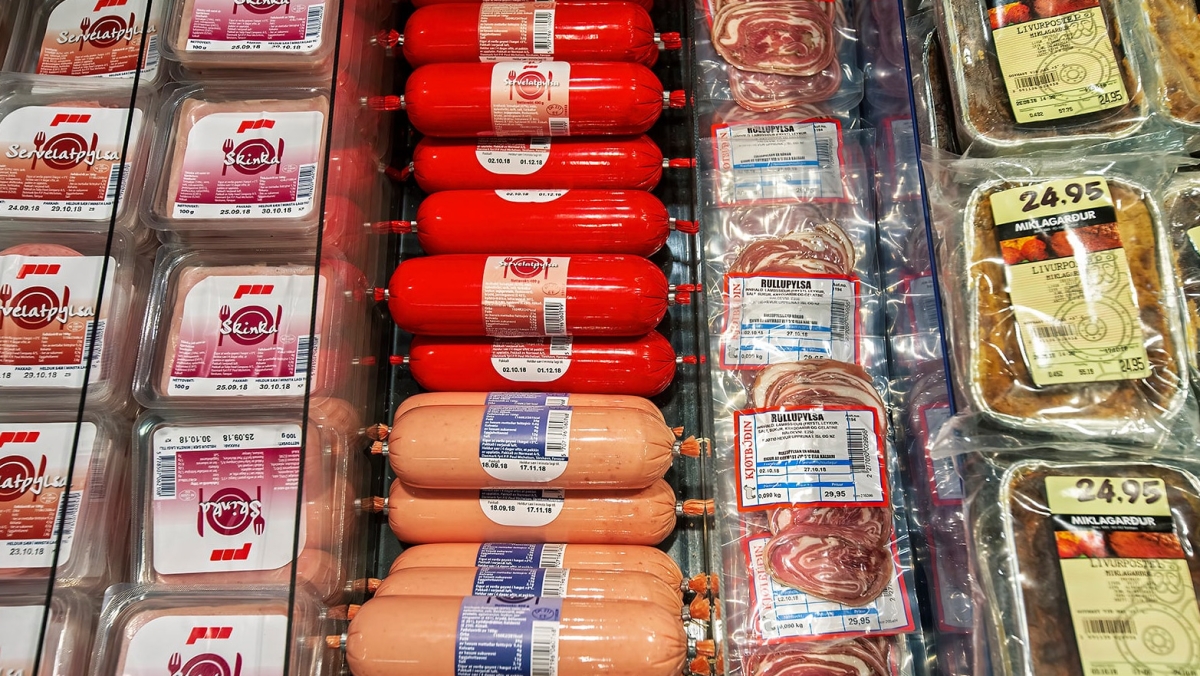Consumer price index
24. Jun 2025
Annual inflation at 0.7%

The Consumer Price Index (CPI) measures inflation as experienced by Faroese households in their daily living expenses. The latest CPI figures are from May 2025.
[px-graph-8]
Inflation eases over the past year
The inflation rate from May 2024 to May 2025 was 0.7%. Price growth is now slower than we have seen in the past four years.
Although price growth has slowed over the past year, it may feel different for households, as prices have risen by 20 percent over the past five years.
[px-graph-1]
Varying price trends
Of the 12 main categories in the CPI, ‘Food and non-alcoholic drinks’ makes up the largest portion of the average Faroese household spending. This category is also the key contributor to the price growth in this quarterly CPI report.
Some other goods and services are offsetting the overall price growth. Interest expenses have fallen significantly, and the price of fuel for household heating is down almost 10% year-on-year. Clothing and footwear prices declined by more than 3%. Health and transport prices also saw a slight drop.
[px-graph-2]
Alcohol and tobacco prices rose almost 5%, while hotel and restaurant prices are up by more than 7%.
Grocery prices still rising
In May 2025, ‘Food and non-alcoholic drinks’ prices climbed almost 5% year-on-year. Prices in this category have risen by almost 30% over the past five years.
[px-graph-3]
Within the ‘food and non-alcoholic drinks’ category, meat prices have risen the most, up by more than 10% year-on-year, with lamb prices seeing the most significant increase. Beef prices also rose significantly. Fish prices, on the other hand, have fallen slightly.
[px-graph-4]
Sweet foods and beverages have also become more expensive in the past year. Prices of coffee, tea and cocoa rose by 22% since May 2024.
Energy and interest costs temper overall inflation
Housing expenses for Faroese households saw an average decrease of almost 5% in the past year.
[px-graph-7]
The average interest rate fell by almost 19% over the past year, pulling down the overall price growth. The price of fuel oil is down 10% compared to May 2024. However, rent prices increased by 10%.
[px-graph-9]
Slower price growth than in EU countries
The annual Faroese inflation rate is well below the EU average of 1.9%. Finland has a lower inflation rate, at 0.5%. Sweden has the lowest rate, at 0.2%. Denmark is at 1.6%, while Iceland has the highest Nordic rate of 3.8%. Norway stands at 3.0%.
[px-graph-6]
Note that the EU inflation rate is based on the HICP index (the Harmonised Indices of Consumer Prices), which means that rental costs are not included
About the Consumer Price Index and inflation
About the Consumer Price Index and inflation
Inflation is the rate of increase in prices over a given period. The Consumer Price Index (CPI) is the most widely used measure of inflation. It measures the overall change in consumer prices based on a representative basket of household goods and services. If the annual inflation rate is 5%, consumers must pay DKK 105 for the same goods or service that cost DKK 100 the previous year.
When the inflation rate is high, money effectively loses value because you receive fewer goods and services for the same amount spent. In other words, a household’s purchasing power decreases if its income does not keep up with the inflation rate.
Changes in consumer prices vary across the categories of goods and services. The CPI weighting system reflects the relative importance of the goods and services as measured by their shares in the total consumption of households.
Faroese CPI figures are compiled quarterly, in February, May, August and November. This is done in accordance with international standards, thus allowing for comparisons with the CPI figures of other nations.
The CPI is one of many measures of inflation in an economy. Others include the Producer Price Index, which is a measure of the change in prices that domestic producers receive for their goods and services, and the so-called GDP deflator, which is a measure of the price of all new, domestically produced, final goods and services in an economy in a year relative to their real value.